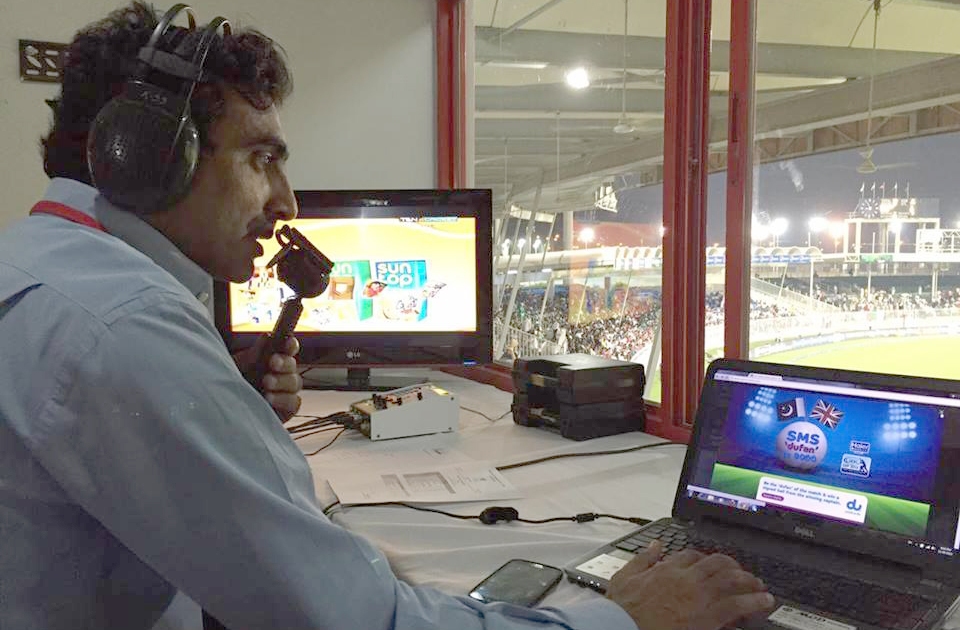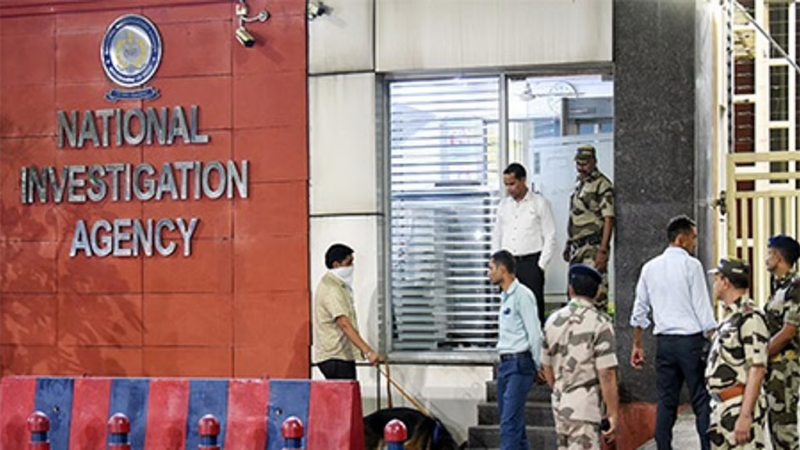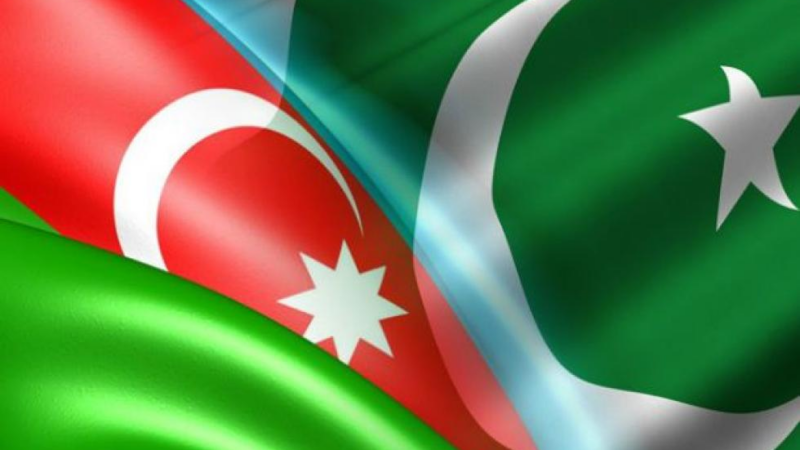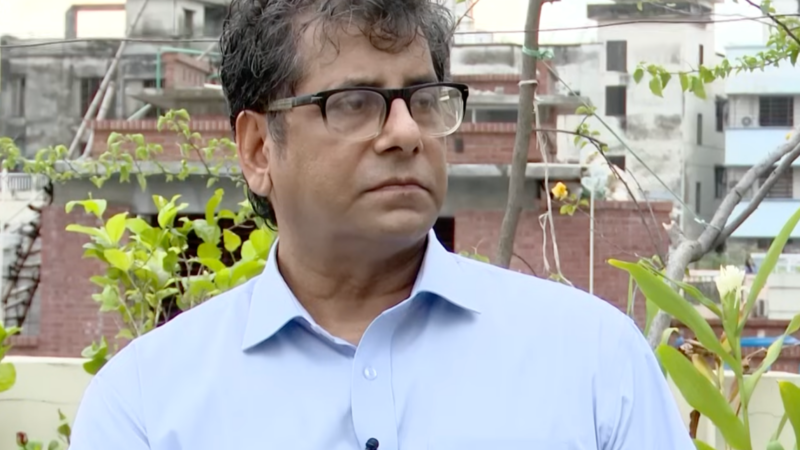Tariq Saeed, the man reviving Urdu cricket commentary in Pakistan

Saeed was a budding cricketer until he got hit above his eye. Now, he is the voice of Urdu commentary in Pakistan.
When Tariq Saeed was hit by a cricket ball just above his right eye, the life of then-college student underwent a remarkable change.
Up until then, Saeed wanted to play cricket, do well at it and perhaps one day represent Pakistan, a dream of millions in the country but achieved only by a few.
But the bouncer left a deep cut above his eye and left his life goals flat on the ground.
“After that incident, I left cricket altogether. I used to get scared of the ball. Every time I’d bat, I would see two of those bowlers running at me,” Saeed told Al Jazeera.
But those with a passion for the game, Saeed added, find an excuse to stay involved, and a way for the strong bond to develop into a career – or a lesser association – in cricket.
“Growing up, I loved listening to certain commentators on Pakistan matches – Iftikhar Ahmed, Hasan Jaleel, Omer Kureishi to name a few.
“After I quit playing, a friend of mine took me to an exhibition match at FC College [in Lahore] and made me do some commentary.
“There, I got a lot of applause. Later, a national-level flood-lit tournament with top-class national cricketers was also taking place in Lahore. I did some commentary there on the PA system and Abdul Qadir [former Pakistan cricketer] and Imtiaz Sipra [sports writer] came to congratulate me afterwards.”
Saeed points to that incident as a turning point, setting off on a journey that has not only brought him many laurels and travels but also gave Urdu commentary in Pakistan a new life.
Tariq Saeed (right) sharing the commentary box with former Pakistan captain Wasim Akram [Courtesy of Tariq Saeed]
Born in District Montgomery (now known as Sahiwal District), approximately 112km (70 miles) from Lahore, Saeed was brought up in a culture that revolved around sports. Named after Sir Robert Montogomery during the British rule of pre-partition India, the region has produced many cricketers and hockey players.
“My cousin was very interested in hockey and cricket and I would go and watch him play. My father would tell me stories about Syed Mohammad Jaffer [former India hockey player and Olympian] who was born here so that got me interested in sports too.”
Fast-forward a few decades and Saeed is now one of the most popular voices among cricket followers in the country.
With Pakistan currently lacking distinguished cricket commentators, Saeed has also ensured cricket enthusiasts’ love affair with Urdu commentary has now been rekindled.
“Before 1970, Urdu commentary on cricket matches wasn’t even common. Even on radio, it used to get a five-minute slot. Since the 1970s, it was given 50 percent airtime.
“But after the Lahore blast [on Sri Lankan team bus in 2009], nobody paid attention to it.
“The revival of Urdu commentary is very important for Pakistan’s international matches. People missed that. The Pakistan Cricket Board introduced Urdu commentary for the Pakistan Super League [domestic T20 league featuring international players] which is a good thing.
“If you look at India, they have commentary in up to eight languages.”
I was watching nt20 and my mother who does not watch cricket at all asked me who it was commentating in urdu and I told her that he is a legend and his name is tariq saeed and she watched the match until your commentary ended…What a legendary voice you have sir… — Ahsan Ali (@syedahsanali05) October 19, 2021
Saeed’s journey from being on the microphone in that Lahore flood-lit tournament to international matches was not easy. As an 18-year-old, he was told he was too young when he approached Radio Pakistan for an audition and a chance to be part of the popular commentary team.
But when Saeed tried his luck again two years later, with a new producer in charge, the outcome was much better.
“Someone told me the sports producer had changed at Radio Pakistan so I thought I’ll meet him. It was Khalid Waqar, an all-time best radio producer. He did my audition and the rest is history. He is my teacher, my mentor and whatever I learnt after that was through him.”
In addition to cricket commentary, Saeed has reported for local Urdu newspapers and is a Deutsche Welle correspondent in Pakistan. He has also done commentary on hockey matches and a Kabaddi World Cup final between India and Pakistan which made him realise how in some parts of the country, cricket was not the most popular sport.
But just like athletes, Saeed said commentators need to look after their mind and body, most importantly their throat which provides them with their bread and butter.
“During a busy season, I don’t drink cold water or fizzy drinks. No ice cream for me either. On match days, I drink tea before every spell. I gargle with hot water frequently. You need to look after your throat and make sure you don’t eat anything sour or greasy.
“I also make sure I don’t eat a lot during commentary because that makes me sleepy which is never a good thing when you’re on a mic. You need to be fully focused and concentrating on what’s happening in the middle. If you miss a ball or related events from previous overs, it becomes difficult as the match progresses.”
But concentration and reporting on what’s happening solely are not enough to keep the listeners and viewers glued, Saeed adds.
“If it’s a long match, like Tests or first-class matches, you need to create a storyboard to keep the audience interested. In Twenty20, it’s all action so there’s no time or need for that. But in the longer format you need to concentrate more, maybe like the players do, to ensure not only the audience but you also don’t zone out.”
As Saeed celebrates the return of cricket – international matches and PSL – to Pakistan after a long drought, he remains content with the path his life took after that injury above his eye.
“Almost 95 percent of individuals you see linked to cricket off the field are those who wanted to be cricketers once upon a time but couldn’t fulfil their dreams. I’m glad to be one of those.”






